 To enhance service speed and avoid tariff delays, we've opened a US warehouse. All US orders ship directly from our US facility.
To enhance service speed and avoid tariff delays, we've opened a US warehouse. All US orders ship directly from our US facility.
| Cat. No. | Product Name | Field of Application | Chemical Structure |
|---|---|---|---|
| DC50040 | GNF-PF-3777 (8-Nitrotryptanthrin) Featured |
GNF-PF-3777 (8-Nitrotryptanthrin) is a potent human indoleamine 2,3-dioxygenase 2 (hIDO2) inhibitor which significantly reduces IDO2 activity with Ki of 0.97 μM.
More description
|

|
| DC67211 | m7GpppAmpG Na salt Featured |
m7GpppAmpG Na salt is a trinucleotide 5′ cap analog with the capping efficiencies for the obtained RNAs of 90%.
More description
|
.gif)
|
| DC67197 | m7GpppAmpG ammonium Featured |
m7GpppAmpG ammonium is a trinucleotide 5′ cap analog with the capping efficiencies for the obtained RNAs of 90%.
More description
|

|
| DC67221 | 3'OMe-m7GpppAmpG (ammonium) solution (100mM) Featured |
3'OMe-m7GpppAmpG ammonium solution (100mM) is a trinucleotide Cap analogue. 3'OMe-m7GpppAmpG ammonium shows a significant translational efficiency. 3'OMe-m7GpppAmpG ammonium can be used as a potential molecular biology tool in the field of mRNA vaccines and mRNA transfection, such as protein production, gene therapy and anti-cancer immunization.
More description
|

|
| DC49193 | PEG2000-C-DMG Featured |
PEG(2000)-C-DMG represents a PEGylated derivative synthesized from 1,2-dimyristoyl-sn-glycerol (1,2-DMG). This compound is instrumental in the formulation of lipid nanoparticles (LNPs), particularly when combined with other lipidic compounds, for the efficient delivery of small interfering RNA (siRNA). Specifically, LNPs incorporating PEG(2000)-C-DMG and encapsulating siRNA designed to target the genes responsible for encoding programmed cell death protein ligand 1 (PD-L1) and PD-L2 have demonstrated efficacy in reducing the expression levels of PD-L1 and PD-L2 in monocyte-derived dendritic cells. Furthermore, formulations that include PEG(2000)-C-DMG are being actively explored in the advancement of LNPs aimed at the delivery of siRNA-based vaccines, highlighting its critical role in the development of therapeutic and prophylactic strategies.
More description
|

|
| DC47310 | Rovanersen Featured |
Rovanersen (WVE-120101) is an antisense oligonucleotide that can be used for huntington’s disease research.
More description
|

|
| DC67161 | MPEG-2000-DPPE Na Featured |
DPPE-MPEG(2000) is a PEGylated form of 1,2-dipalmitoyl-rac-glycero-3-PE (DPPE). It has been used in the synthesis of anionic liposomes for drug redistribution and toxicity prevention.
More description
|

|
| DC13591 | azido-acetal linker(Acid-degradable liker) Featured |
Azido-acetal linker is stable at physiological pH (7.4) but rapidly hydrolyzes in the acidic environment of endosomes useful as a fragment of lipid synthesis.
More description
|

|
| DC67313 | 6-Oxohexyl 2-hexyldecanoate Featured |
|
|
| DC67312 | 1-Propanethiol, 3-(diMethylaMino)-, hydrochloride Featured |
|
|
| DC67311 | 1-Propanaminium, 2,3-dihydroxy-N,N,N-trimethyl-, chloride (1:1), (2R)- Featured |
|
|
| DC67310 | 1,4-Piperazinediethylamine Featured |
|
|
| DC67309 | H2N(CH2)3N(tert-butoxycarbonyl)(CH2)4NH2 Featured |
|
|
| DC65568 | C14-494 Core (Lipid Core 494) Featured |
C14-4 Core (Core 4) is the core structure of C14-4.
More description
|
.png)
|
| DC67308 | CbzNH-PEG1-Br Featured |
|
|
| DC67307 | 1-Piperazineethanamine, N-(phenylmethyl)- Featured |
|
|
| DC67306 | 1-Propanethiol, 3-(dimethylamino)-, 4-methylbenzenesulfonate (1:1) Featured |
|
|
| DC83215 | DMAP-BLP |
DMAP-BLP is a lipid for RNA and vaccine delivery.DMAP-BLP exhibits optimized bilayer destabilizing and pKa properties leading to highly potent gene silencing in hepatocytes following IV administration that is similar to “gold standard” lipids such as DLinMC3-DMA.
More description
|

|
| DC11375 | KRIBB3 Featured |
KRIBB3 is an Hsp27 and microtubule inhibitor that inhibits migration and invasion of MDA-MB-231 cells in vitro in an Hsp27-dependent manner.
More description
|
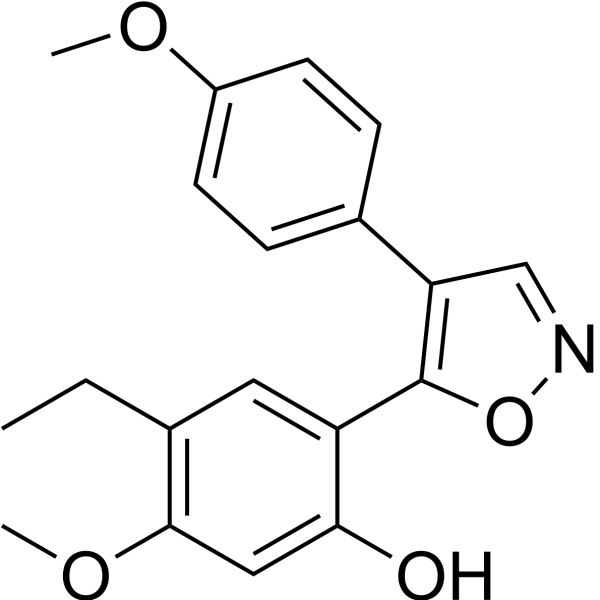
|
| DC22085 | Tasurgratinib(E7090) Featured |
E7090 (E 7090) is a highly potent and selective orally bioavailable inhibitor targeting FGFR1, FGFR2, and FGFR3, with IC50 values of 0.71 nM, 0.50 nM, and 1.2 nM, respectively. It exhibits significantly weaker inhibition of FGFR4, with an IC50 of 120 nM. This distinct selectivity profile positions E7090 as a promising therapeutic candidate for diseases driven by aberrant FGFR1-3 signaling, offering a targeted approach to inhibit these receptors while minimizing off-target effects on FGFR4. Its oral availability further enhances its potential as a convenient and effective treatment option for patients with FGFR-dependent conditions.
More description
|

|
| DC67305 | BMS-1166-N-piperidine-COOH Featured |
BMS-1166-N-piperidine-COOH, a derivative of the potent PD-1/PD-L1 interaction inhibitor BMS-1166, serves as a key component in the design of PROTAC PD-1/PD-L1 degrader-1 (HY-131183). By binding to an E3 ligase ligand via a linker, this moiety facilitates the targeted degradation of PD-1/PD-L1, offering a novel approach to modulate immune checkpoint pathways. BMS-1166 itself is a highly effective inhibitor of the PD-1/PD-L1 interaction, with an IC50 of 1.4 nM, and it counteracts the immune-suppressive effects of the PD-1/PD-L1 checkpoint on T cell activation. This innovative strategy combines the inhibitory potency of BMS-1166 with the degradation capability of PROTAC technology, providing a promising tool for advancing cancer immunotherapy and immune-related research.
More description
|

|
| DC67304 | JMV6944 Featured |
JMV6944 is a potent agonist of the pregnane X receptor (PXR), demonstrating its ability to competitively inhibit the binding of the human PXR ligand-binding domain (LBD) with an IC50 value of 680 nM. This compound effectively induces the expression of CYP3A4 mRNA in freshly isolated primary human hepatocyte cultures, highlighting its role in modulating drug metabolism and detoxification pathways. JMV6944 serves as a valuable tool for investigating PXR-mediated transcriptional regulation and its implications in xenobiotic metabolism, liver function, and therapeutic interventions. Its dual functionality as a PXR agonist and CYP3A4 inducer underscores its potential in both research and drug development.
More description
|
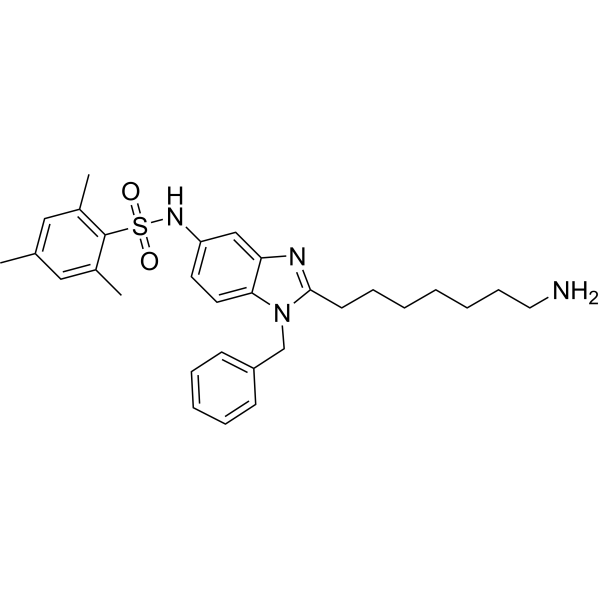
|
| DC8101 | BS-181 hydrochloride Featured |
BS-181 is a highly selective inhibitor of CDK7, exhibiting potent activity with an IC50 value of 21 nM. It demonstrates remarkable specificity, showing over 40-fold greater selectivity for CDK7 compared to other cyclin-dependent kinases, including CDK1, CDK2, CDK4, CDK5, CDK6, and CDK9. This exceptional selectivity positions BS-181 as a valuable tool for studying CDK7-specific biological functions and exploring its therapeutic potential in diseases where CDK7 plays a critical role, such as cancer. Its precision in targeting CDK7 underscores its utility in both research and drug development efforts.
More description
|
.gif)
|
| DC67303 | I-152 Featured |
I-152 is a novel conjugate composed of N-acetyl-cysteine (NAC) and cysteamine (MEA), designed to harness the synergistic effects of these two bioactive compounds. It demonstrates the ability to activate key cellular signaling pathways, including NRF2 and ATF4, which are involved in oxidative stress response and cellular homeostasis. Additionally, I-152 exhibits potent anti-proliferative properties, making it a promising candidate for research in conditions characterized by uncontrolled cell growth, such as cancer. This unique combination of NAC and MEA in I-152 offers a multifaceted approach to modulating cellular pathways and addressing pathological processes.
More description
|
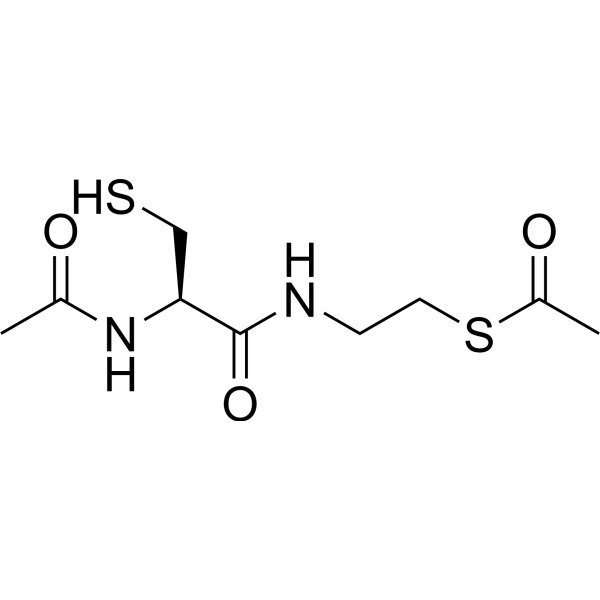
|
| DC67302 | KAT modulator-1 Featured |
KAT modulator-1 (Compound 3) is a novel modulator of lysine acetyltransferases (KATs) with a unique mechanism of action. It specifically interacts with the full-length p300 protein but does not engage with its isolated catalytic domain, highlighting its distinctive binding properties. This compound serves as a valuable tool for epigenetics research, enabling the exploration of p300's role in chromatin remodeling, gene regulation, and other epigenetic processes. Its selective interaction with full-length p300 offers insights into the structural and functional complexities of KATs, paving the way for the development of targeted epigenetic therapies.
More description
|

|
| DC48364 | Sovleplenib Featured |
Sovleplenib is a highly potent inhibitor of spleen tyrosine kinase (Syk), derived from the innovative research disclosed in patent WO2012167733 A1. This compound demonstrates significant potential in modulating Syk-mediated signaling pathways, offering a promising therapeutic approach for conditions where Syk activity plays a critical role. Its development underscores the ongoing advancements in targeted kinase inhibition, providing a valuable tool for both research and potential clinical applications in immune-related and inflammatory diseases.
More description
|

|
| DC20200 | TP0427736 Featured |
TP0427736 is a highly selective inhibitor of ALK5, demonstrating potent activity with an IC50 of 2.72 nM. It effectively suppresses Smad2/3 phosphorylation in A549 cells, highlighting its ability to modulate TGF-β signaling pathways. Additionally, TP0427736 has been shown to reduce the growth inhibition of human outer root sheath cells, suggesting its potential therapeutic utility in conditions where ALK5-mediated signaling plays a critical role. This compound represents a promising tool for investigating ALK5-related biological processes and developing targeted treatments for diseases involving aberrant TGF-β signaling.
More description
|
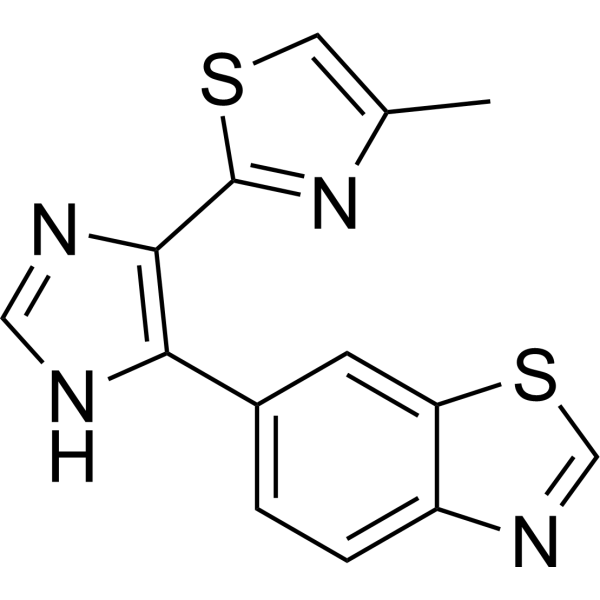
|
| DC67301 | 3-sucCA Featured |
3-Succinylated cholic acid (3-sucCA) is a microbially derived bile acid that plays a significant role in gut health and metabolic regulation. As a lumen-restricted metabolite, 3-sucCA has been shown to mitigate the progression of metabolic-associated fatty liver disease (MAFLD) to metabolic-associated steatohepatitis (MASH) in mouse models. Its protective effects are primarily attributed to its ability to reshape the gut microbiota, particularly by enhancing the growth of Akkermansia muciniphila, a beneficial bacterium associated with improved metabolic health. Notably, patients with biopsy-confirmed MAFLD exhibit reduced levels of 3-sucCA, underscoring its potential as a biomarker and therapeutic target for managing metabolic liver diseases. This unique metabolite highlights the intricate interplay between gut microbiota and liver health, offering promising avenues for intervention.
More description
|
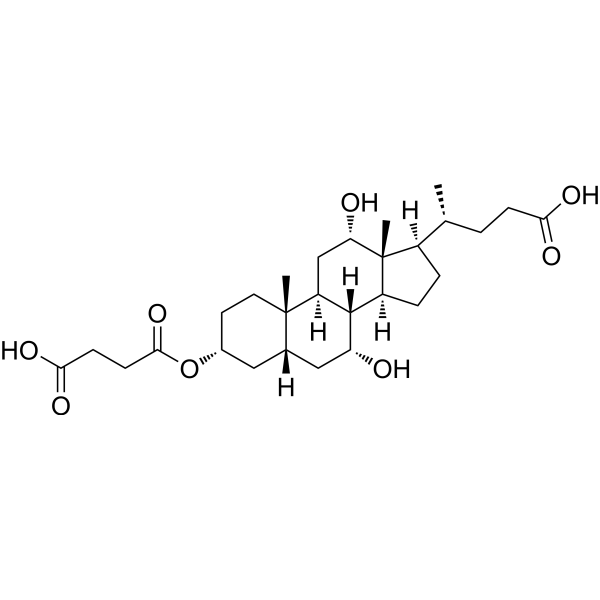
|
| DC67300 | FBnG Featured |
FBnG is a key component of the non-ribosomal peptide synthetase/polyketide synthase (NRPS/PKS) machinery, playing a crucial role in the biosynthesis of fabrubactin (FBN). This versatile molecule can be utilized in the synthesis of AUTAC4, specifically as part of the compound FBnG-(Cys-acetamide)-CH2-PEG3-CH2-CH2-CH2-NH2 (HY-150408). By leveraging its integration into this synthetic pathway, FBnG serves as a valuable building block for the development of AUTAC4, highlighting its potential in advancing research and therapeutic applications related to targeted protein degradation and related biological processes.
More description
|

|
| DC60571 | BBO-8520 Featured |
BBO-8520 represents a groundbreaking first-in-class covalent inhibitor that uniquely targets both the active (ON) and inactive (OFF) states of KRAS-G12C. Through comprehensive global cysteine proteome analysis, BBO-8520 demonstrates exceptional binding specificity to KRAS-G12C, showcasing a remarkable selectivity of over 100-fold compared to wild-type KRAS and other mutant isoforms. Notably, BBO-8520 exhibits no detectable activity against N-RAS or H-RAS, underscoring its precision in selectively inhibiting KRAS-G12C. This distinctive profile positions BBO-8520 as a promising therapeutic candidate for addressing KRAS-G12C-driven cancers, offering a novel approach to targeting this historically challenging oncogenic mutation.
More description
|

|